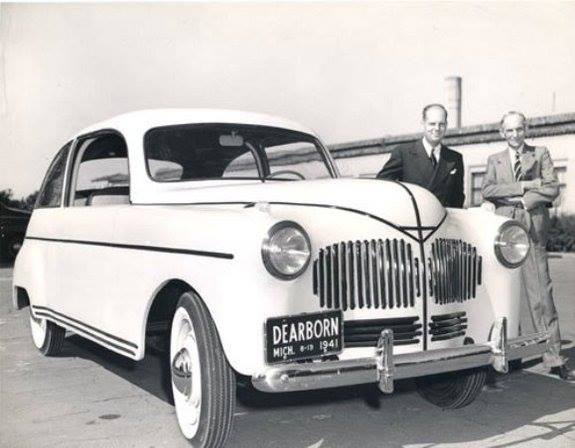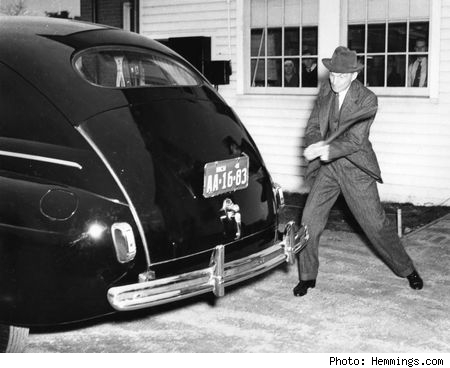Source: hiddenmysteries.org
Published: February 25, 2013
excerpt from:
Grown to drive ~ Metal, plastic, glass… and plants?
What kind of cars are they building?
by Curt Guyette
What some might call the car of the future has already made its big debut. The unveiling came in Dearborn — more than 50 years ago. David Morris, executive director of the Minneapolis-based Institute for Local Self-Reliance, described the event in a recent issue of his organization’s newsletter:

On August 14, 1941, at the 15th Annual Dearborn Michigan Homecoming Day celebration, Henry Ford unveiled his biological car. Seventy percent of the body of the cream-colored automobile consisted of a mat of long and short fibers from field straw, cotton linters, hemp, flax, ramie and slash pine. The other 30 percent consisted of a filler of soymeal and a liquid bioresin.

HEMP CAR
“The timing gears, horn buttons, gearshift knobs, door handles and accelerator pedals were derived from soybeans. The tires were made from goldenrods bred by Ford’s close friend Thomas Edison. The gas tank contained a blend: about 85 percent gasoline and about 15 percent corn-derived ethanol.”
To prove the vehicle’s superiority, Ford demonstrated the strength of the car body by smashing an ax against the trunk, only to have it bounce off. For some it remains a landmark event. “That’s one of my favorite pictures,” says Richard Wool, who is at the vanguard of an emerging industry that’s rediscovering what Ford thought to be a better way of making cars. Following in Ford’s track, Wool is developing adhesive bioresins from soy oil at the University of Delaware.
“To Henry Ford,” wrote Morris, “the vegetable car was the perfect vehicle for driving the American farmer out of a 20-year economic depression. But after World War II, the maturation of the petrochemical industry and the export-driven revival of American agriculture seemed to relegate the idea of a biological car to the dustbins of history. Fifty years later, at the twilight of the 20th century, Ford’s dreams are again attracting attention. Working independently, scientists, engineers and entrepreneurs are finding more and more ways to incorporate vegetable-derived products into your standard car.”
